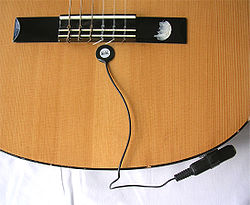Piezoelectricity
Piezoelectric material generates a small electrical voltage, when its shape is deformed. This can be by as little as a 0.09% change, and can produce 12mAh worth of electricity at 230V (standard power output). It is important to note that the actual values of a piezoelectric material's volume or surface area do not change, as only the ratios of each axis (x, y and z) that are altered. E.g. a cuboid with 20 meters cubed volume can have the normal dimensions 1 meter by 2 meters by 10 meters, and the deformed dimensions 2 meters by 2.5 meters by 4 meters; the volume would remain the same, 20 cubic metres (710 cu ft).
When processed, the piezoelectric crystal become sharper as they get refined through heating and cooling. This process makes the material much more sensitive to changes in pressure, as well as increases their resistance to compressive stress that would impede its ability to function.
Piezoelectricity Media
Piezoelectric balance presented by Pierre Curie to Lord Kelvin, Hunterian Museum, Glasgow
Piezoelectric plate used to convert audio signal to sound waves
Any spatially separated charge will result in an electric field, and therefore an electric potential. Shown here is a standard dielectric in a capacitor. In a piezoelectric device, mechanical stress, instead of an externally applied voltage, causes the charge separation in the individual atoms of the material.
Piezoelectric disk used as a guitar pickup
Metal disk with piezoelectric disk attached, used in a buzzer
Sources
Weatherill, Bryan; Mantovani, Bill; Jones, Robert; Cooke, Ernie; Roberts, David (2010). Engineering Level 3, BTEC National. Andy Boyce. Pearson. ISBN 978-1-84690-724-1.








